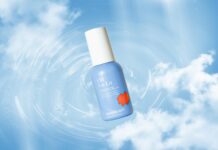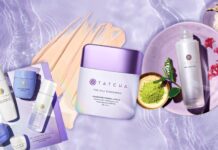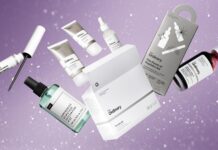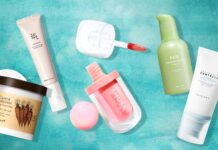
Protecting your skin against the sun’s UV rays is one of the best things you can do to keep your skin healthy and youthful. But although sunscreen is one of THE essential skincare steps, it kind of makes you wonder why some of your favorite brands don’t have their versions to provide to their customers or why it would take several years for them to come out with one.
We had the same questions, too, so we reached out and interviewed Chemist Confession co-founders Gloria Lu and Victoria Fu to share all the industry deets from a chemist and formulator perspective. Here’s a snippet of the interview below:
Q: So Victoria and Gloria, can you share with us your life pre-Chemist Confessions? What inspired you guys to create Chemist Confessions?
Gloria: So Victoria and I are actually co-workers. We were both formulation chemists. We used to work at L’Oréal. I worked on high levels of actives. So brands like SkinCeuticals and La Roche-Posay.
Victoria: And I worked on anti-aging, which is more of an umbrella category. I was in Kiehl’s as well but then moved into upstream anti-aging, which covers from sunscreens to serums, so it can mean a lot of different things.
Gloria: We became friends because we shared similar humor (terrible sense of humor), and similar frustrations. Both of us have a lot of existential angst about where we were in terms of where the industry is going and the things we’re working on. The entire industry was so marketing-driven. We just felt like chemists, we’re like stashed away in the labs and our voices aren’t really being heard. So we decided to leave.
Victoria: We both were gonna actually leave the industry entirely. But then as a fun project, we decided to start an Instagram just to kind of share our industry insider knowledge. We just wanted to see if what we knew could help anyone shop for skincare and just make their lives a little easier. We really didn’t know if it was going to succeed. It was kind of just like a “Hail Mary!” moment. Because we were thinking that no one really wants to get too into the nitty-gritty. And the ingredient names aren’t very friendly to learn.
But who knew? People are… they’re willing to do their homework. You’d be surprised how much people know and we were shocked. And next thing you know, we’re like, “Hey, this Instagram is a full-time job. Now what?”
Gloria: Then we decided to create some products. Because at the end of the day, we’re chemists. Our whole passion is to formulate and create! But at the same time, we really felt like with Chemist Confessions, the mission is to bring transparency to the industry while making skin science fun! So we really embodied that in both our content and products.
Q: Could you help us walk through before when you were at the beauty conglomerate, what was it like? Because you said things are marketing-driven, can you kind of explain what that means?
Victoria: Every big company is different but usually as formulators or chemists in the lab, we get a brief for marketing. So let’s say they want an anti-aging cream that has this ingredient that… Sometimes they might not even necessarily ask for a level of performance. It’s more like this is a story we want to tell. Now create something that will help us tell the story.
Gloria: And there are times that there’s a trend that catches on so hot that you get a brief that’s like, “Drop everything you’re doing! We need this in three months?” And you can imagine that’s not exactly very research-friendly.
Victoria: No, I think back then, it’s like they championed really exotic actives with a beautiful story. Gloria, would you like to tell your favorite mock-up story of this?
Gloria: I can’t tell you how many meetings we went to and they’re like, “Guys, this flower blooms once every 10 years on top of this mountain. And we have these monks that will climb up the mountain to collect the first dewdrop from the petals. And it is the fountain of youth!”
Victoria: So it’s stories like that where you’re just like, “It’s beautiful! You can imagine the marketing video montage behind it!”
Gloria: But for us, it’s just not very fulfilling. Because cosmetic production just moves so quickly. How much time do you actually have to actually understand what does this ingredient does for you?
Victoria: And it also makes it very difficult for a consumer to shop for because they’re like, “Oh, uh looks beautiful. The model has beautiful skin. I guess it works… Like does it work?” That’s kind of what we mean by chemists don’t really get a say in how these formulas are truly designed.
And in terms of efficacy and performance, they’re really trying to meet marketing claims than actual delivery. We’re not just speaking from our work experience at the big beauty conglomerate. This is how the industry was, is, and it’s slowly changing, which is really exciting for us to see.
It’s just because at the end of the day, marketing is what drives sales. We always knew that whoever could change the industry would be the consumer. We’re really seeing that like really taking into effect now and it makes us happy.
Q: How hard is it to formulate sunscreens?
Gloria: Going back to our friend, Avobenzone, this is the core issue with chemical sunscreens in the U.S. because, one of the primary goals is to stabilize Avobenzone. That’s why you’ll see it in combination with Octocrylene a lot. Like the L’Oreal technology, you’ll see “Mexoryl” on the bottles. They’re also UV filters but they’re also known to help stabilize Avobenzone.
Now the issue is, it can be stabilized but then you have to test it – it has to last a shelf life and this is where everything matters. Victoria will tell you this but you can change 0.5% of what you think is the most vanilla ingredient on Earth. You go and run your preliminary tests and you realize, “Oh, crap! Nothing works anymore!” Now we have to go back and adjust the formula – it’s that finicky!
Victoria: Everything matters! That packaging that the sunscreen’s in matters since you need to know if it can actually give you the proper protection while sitting on that shelf. That’s why we should take the expiration date of a sunscreen very seriously!
Q: What about for mineral sunscreens?
Gloria: The difficulty is in even dispersion and we always say, “Please, please don’t go online and find a homemade sunscreen formula!” You can’t just buy zinc oxide powder, add it to your cream, and call it a sunscreen! Formulating sunscreen’s a huge challenge for us in the labs, too.
Q: How do different textures of SPF work to protect the skin?
Victoria: It’s simple: you rub it on and it creates a film. When you create this nice film, the UV rays will absorb that energy and dispel it as heat. And actually, that’s how it works for the oil and the stick format; it’s the same!
Gloria: We should add that it doesn’t matter what the format is because it gets tested the same way.
Victoria: Yeah, I was going to say, except for powders. That is the most mysterious one of all.
For more information on sunscreen & industry secrets, check out our interview with Chemist Confessions here:
Shop all of our curated faves at: https://bwth.in/shop
Subscribe to our YouTube Channel for more information and product recommendations: https://bwth.in/subscribe





